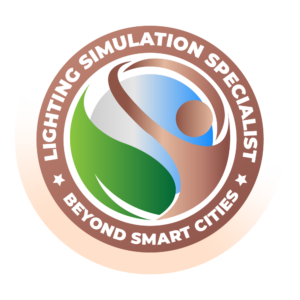About Course
Lighting Efficiency System Specialist – LESS Training
 Lighting Efficiency System Specialist – CEM Refresher Training Course offers intensive, hands-on training that is perfect for recent graduates of technical or engineering schools, engineers who are new to the Lighting Systems field, people who need a refresher on new technologies, and facility managers, sales reps, and others who want to learn more about lighting basics, lighting systems control, and lighting systems.
Lighting Efficiency System Specialist – CEM Refresher Training Course offers intensive, hands-on training that is perfect for recent graduates of technical or engineering schools, engineers who are new to the Lighting Systems field, people who need a refresher on new technologies, and facility managers, sales reps, and others who want to learn more about lighting basics, lighting systems control, and lighting systems.
The training covers the technical aspects of design and gives participants the chance to learn more about how lighting systems can be used to save energy and improve the quality of the indoor environment.
The CLighting Efficiency System Specialist – LESS Training Course was prepared by Krishnaji Pawar, CEO and founder of Beyond Smart Cities.
What does a person who specialises in lighting efficiency do?
Lighting efficiency experts know how much light a building needs based on how many people live there and what it is used for. This is true whether they are putting lights in a new building or putting new lights in an old building. They measure, check, and evaluate lighting efficiency projects, including the effects on people, technologies, and financial incentives, in order to compare savings to those of other energy efficiency projects and figure out the return on investment (ROI).
Learning Objectives:
- Lighting retrofits: Look for and evaluate places where you can save a lot of energy.
- Basics, features, and terms of lighting design
- An evaluation of how well lighting systems use energy
- Evaluate and find places where you can save a lot of energy.
- Lighting simulation for lighting that uses less energy
- How to do audits and upgrades in a practical way
- How to Keep from Making Common Mistakes When Replacing Lights
Key Takeaways
- Work through lighting basics and practical examples to demonstrate the topics and procedures covered.
- Look over the different parts of the Body of Knowledge—Lighting Systems from the point of view of an AEE or BEE to prepare for the certification exam.
- Work through practical examples to demonstrate the topics and procedures covered.
- This training programme helps prepare attendees to take the Certified Energy Manager (CEM) exam.
- One of the most well-known certifications in the field of energy management and energy efficiency Get known in your field and among your peers, add value to your company, and move your career forward.
Traditional lamps, such as incandescent lamps, must be changed out (or re-lamp) in order to make way for more energy-efficient lighting options, such as fluorescent lamps, compact fluorescent lamp (CFL) lamps, and light emitting diode (LED) lamps. In addition to this, it has the appropriate lighting controls built into it, such as timer controls, PIR sensor-based controls, ultrasonic sensor-based controls, and so on.
It includes the automatic turning off of lights when they are not being used, particularly during the hours of daylight. In place of the ballasts used in traditional lighting, it makes use of electronic chokes, and by employing electronic circuitry, it is able to achieve dimming of the lights whenever it is required to do so.
These strategies are adaptable for use in the exterior lighting, the interior lighting of residential buildings, and the interior lighting of commercial buildings. These schemes not only lower the amount of energy that is consumed, but they also improve the quality of the lighting, raise both the level of safety and the wellbeing of the staff, and reduce the negative effects on the environment.
Why is energy-efficient lighting necessary?
Lighting is a fundamental requirement for any structure, and it affects people’s daily activities. This contributes significantly to the total energy consumption of residential, commercial, and industrial installations.
In industrial settings, lighting energy consumption accounts for only a small portion of the total energy consumed, approximately two to five percent. It ranges from fifty to ninety percent in the residential sector and from 20 to 40 percent in the commercial/building, information technology, and hotel sectors.
Course Content
Section 1: Introduction and Course Outline
-
L1. Introduction and Course Outline
12:44 -
L1. Introduction and Course Outline Handout
Section 2: Lighting System
Section 3: Efficient Lighting Design
Section 4: Lighting Retrofits
Section 5: Lighting Control Technologies
Section 6: Lighting Quality Measures
Section 7: Practical Approaches to Audits and Upgrades
Section 8: Energy performance assessment of lighting systems
Section 9: Lighting simulation
Section 10: Summary and Resources
Student Ratings & Reviews


